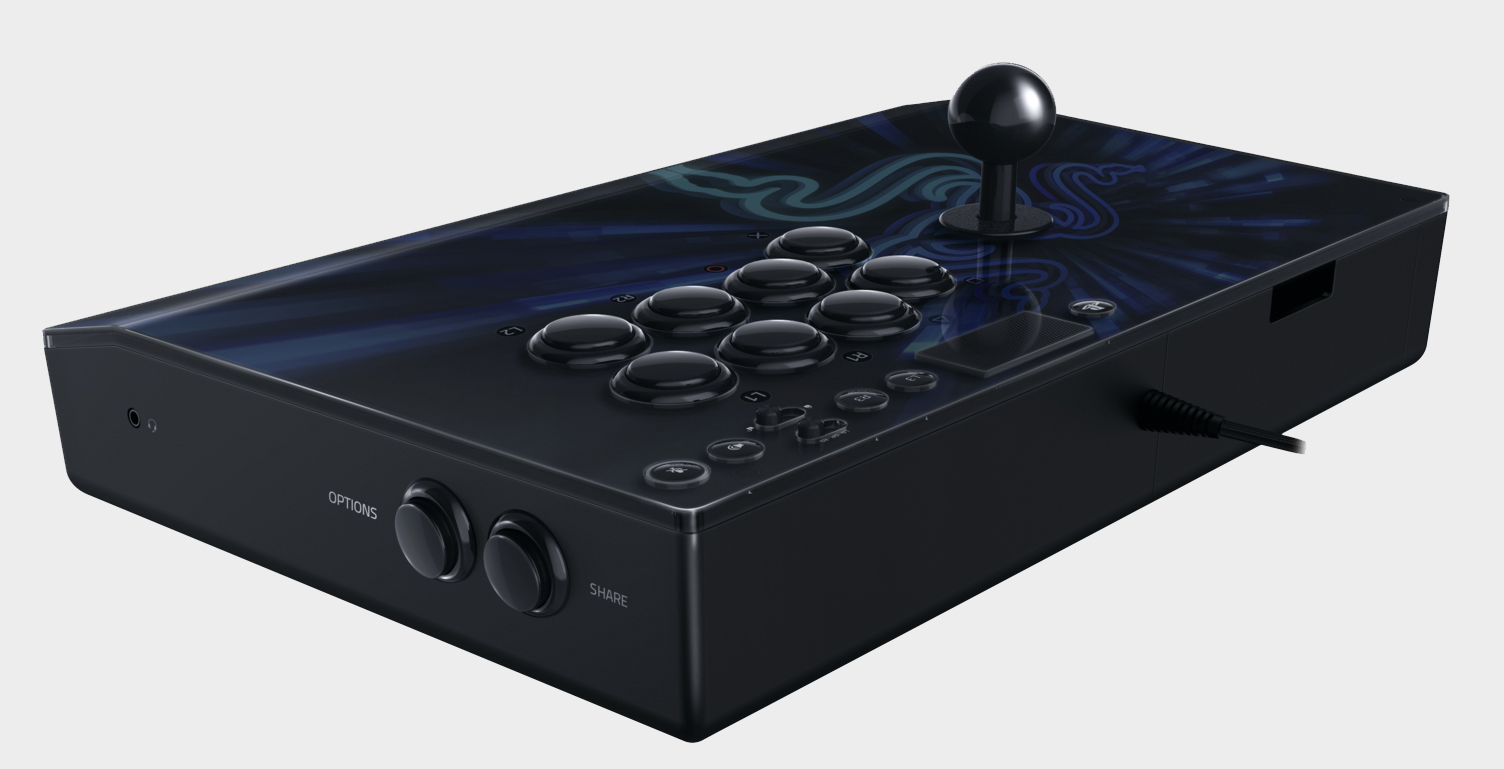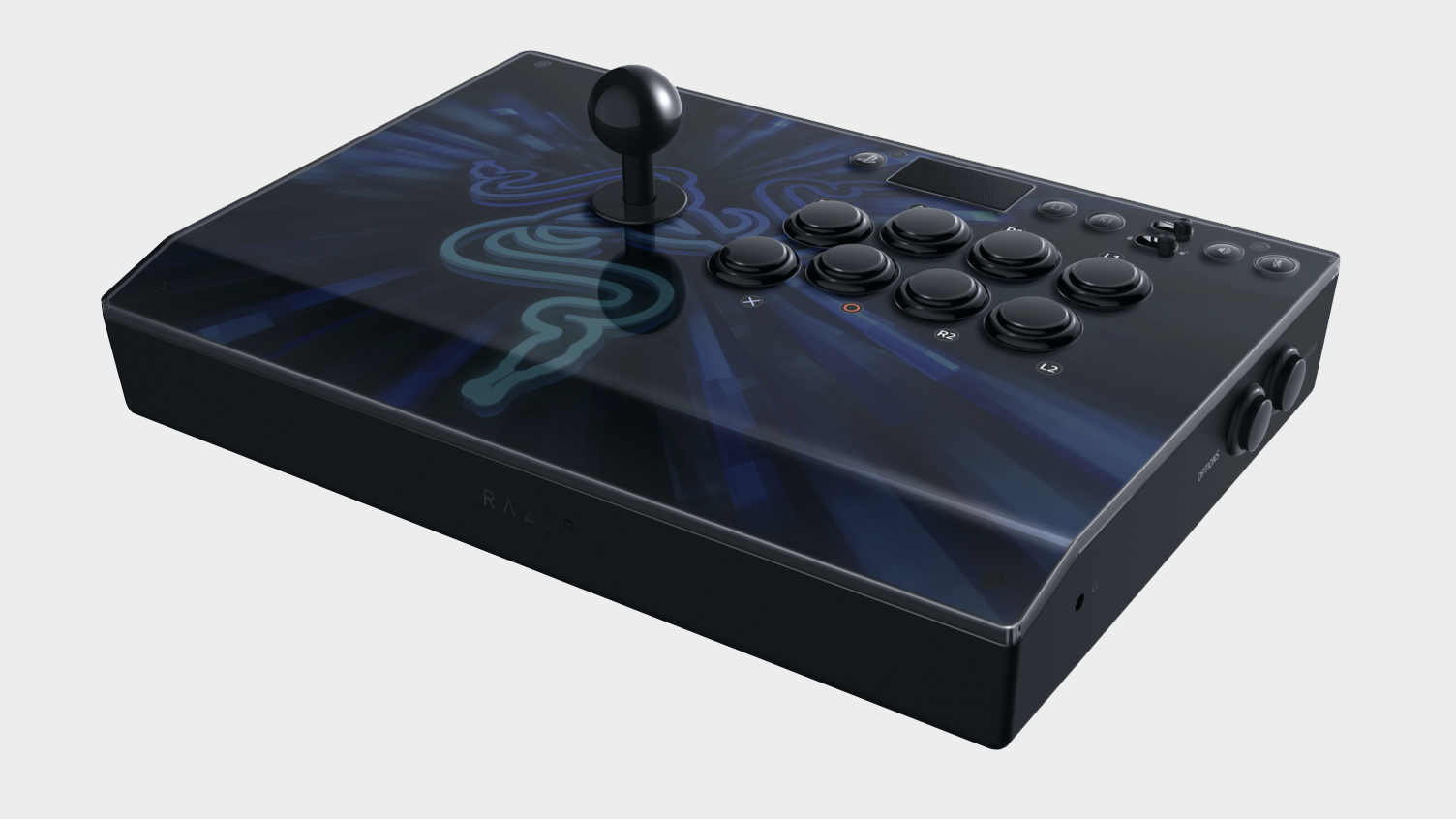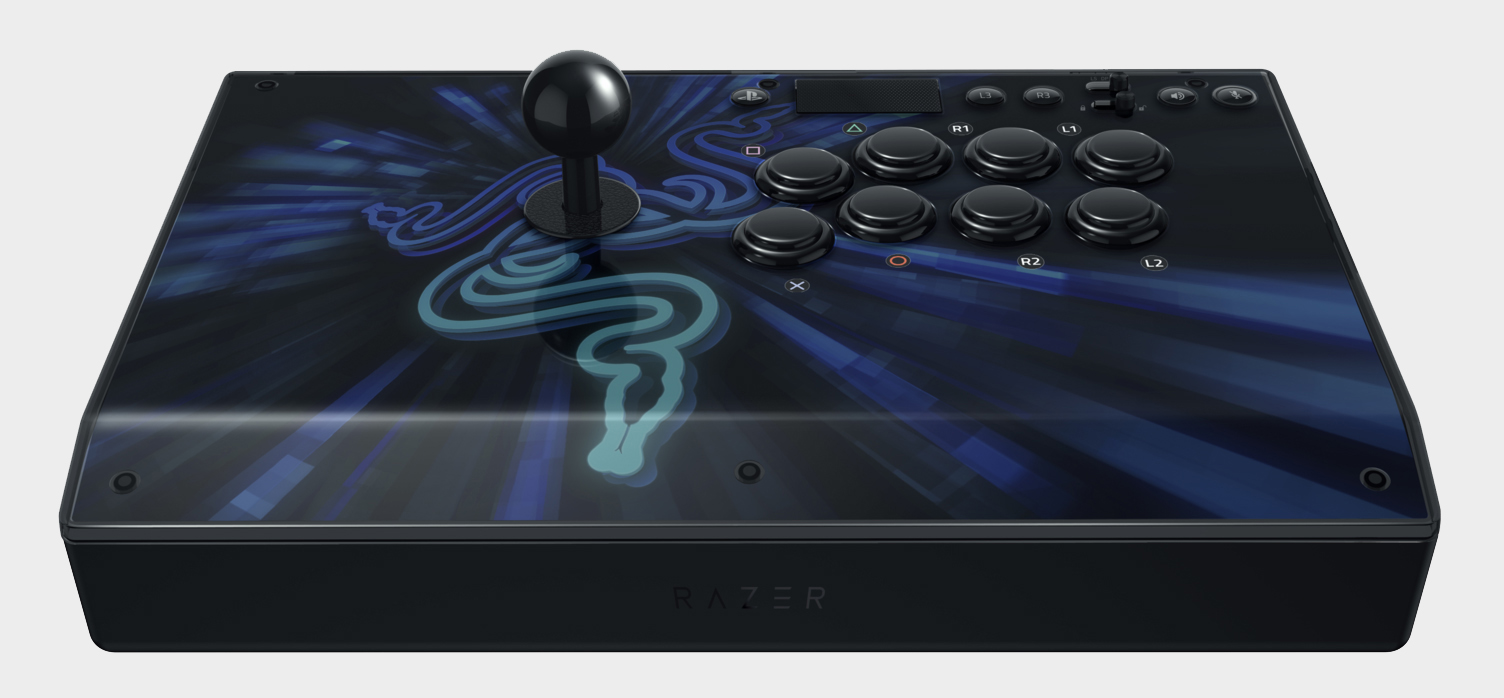Our Verdict
The Razer Panthera Evo has the makings of a great fightstick that’s ready to rumble on PC, but unreliable buttons and time-consuming customization hold it back.
For
- Simple PC support
- Responsive controls
- Stowable USB cable
- Improved design
Against
- Easily loosened joystick
- Buttons jam
- Time-consuming customization
PC Gamer's got your back
Razer hasn’t sat idle with its current lineup of arcade fightsticks. The Panthera and Atrox offer gamers an arcade-like control scheme to go with console (and PC in the case of the Panthera) fighting games for improved responsiveness and comfort over standard video game controllers.
Razer’s new Panthera Evo positioned to upgrade the experience offered by the Panthera, giving it an overhauled design and some new custom-made components. At $199 (£159.99), it’s sitting high in the premium price point, while the old Panthera has seen its price reduced.
When considering the price of the Panthera Evo alone is comparable to a new, budget graphics card or a complete PS4 console, it’s clear that it’s a specialty purchase. But, the difference in control between a fightstick and controller is stark for fighting games. And, in many ways, the Panthera Evo lives up to and improves on its predecessor. It’s not a homerun, though.
PS4/PC compatible
Sanwa ball-top joystick
8-button Vewlix layout
Razer Action Button mechanical switches
9.8 ft USB cable
3.5mm headset jack
Tournament lock-out switch
A box of goodies
The Razer Panthera Evo is a lap-sized box with two wide rubber grips on the base that kept it perfectly in place while I gamed. The top surface is a clear plastic with Razer artwork below, though the artwork can be swapped out.
The Panthera Evo has a Sanwa joystick with a balltop and eight mechanical buttons in the popular Vewlix layout. The placement is comfortable and easy to get used to. The slight slope at the front of the fightstick makes it even more comfy when I rest my wrists—an improvement on the original Evo, which had a hard angle in the same position.
One significant change from the original Panthera is that the Evo doesn’t use Sanwa buttons. Instead, the Evo features Razer Action Buttons, which use the same Razer Mechanical Switches that the company puts into its keyboards. With a 30-million tap life cycle, they should last a long time.
Above the main buttons, there are the other less frequently used buttons: the PlayStation buttons, L3, R3, touchpad, volume controls, a tournament lockout switch, and a toggle that changes the mode of the joystick. (It can act as a Left Stick, Right Stick, or D-Pad.). The right side of the fightstick has the Share and Options buttons as well as a 3.5mm headset jack.
On the back of the Panthera Evo, there’s a compartment that conveniently stores the 9.8-foot USB cable. The cable is coated in rubber and includes a choke at one end to prevent signal interference. The rear compartment could stand to lock shut though, as the cable doesn’t always fit all the way, sometimes keeping the door slightly ajar.

Good start, worse finish
From the get-go, the Panthera Evo seemed like a worthy upgrade. It was immediately more comfortable to use, and the quickly stowable USB cable was more convenient than the screw-in cable included in the original Panthera.
Setting up the Panthera Evo on PC was also easy. I simply jumped into Steam’s controller settings and checked the PlayStation Configuration Support. Given that I had to fully map the controls of other fightsticks I’ve reviewed, this was a welcome improvement to the setup process. Even the audio pass-through was hassle free, with Windows immediately detecting the sound Panthera Evo as a sound device.
Playing Dragon Ball FighterZ, the in-game button prompts were still Xbox controls, unfortunately. But, after a bit of getting used to, it’s easy enough to look past. But, once I was actually playing with the Panthera Evo, a few of the downsides showed themselves.
The most minor is the volume control, which is just a bit odd. The volume button on the fightstick seems to change levels in Windows, but then changing volume in Windows picks up from wherever it had last been set in Windows, overriding the Evo’s levels. So, if it was at 50 originally and then lowered with the Evo, pressing volume up on the computer would increase it from 50, making the level seem to spike suddenly.
As good as the Sanwa joystick is, Razer’s balltop head has a knack for spinning loose while playing. While I never spun it all the way off during a game, the loose feel was not as comfortable as when it’s spun tight. That said, it didn’t have much impact on my ability to execute a quarter-turn, double flick, or any other quick stick movement.

Sticky issues
Matters got worse with the buttons, though. Most of the time, I found Razer’s buttons just as good as Sanwa’s. They’re highly responsive, actuating with light, quick taps. And they pop back up readily. I didn’t notice any input lag.
But, I’m not a seasoned fighting game veteran, and don’t have perfect form. Occasionally, I get sloppy and don’t hit the buttons right in the center. And, the Panther Evo’s buttons have what seems to be a quality-control issue.
Pressing the buttons on the edge will tilt them slightly, and then the friction from the buttons’ sides against the housing prevents some of them from going down all the way. In some cases, the button wouldn’t even actuate. Given that the original Panthera buttons would actuate with the lightest glance, it came as big surprise that I could run into this issue.
There’s nothing like pounding in a quick combo as Android 16 and going to wrap it up with a heavy attack only to punch the button for no response. Some buttons stuck worse than others when I pressed on the edges, and they all pop back up. But, a button has one job, and they shouldn’t be this picky about doing it.

Modders be gone
Modders may want to change out the components to their favorite sticks or buttons, especially given the sticking issue. But, even though the Razer Panthera Evo is still as readily customizable as its predecessor, it takes extra work to open the chassis.
It takes removing seven screws just to remove the front plate and change out the artwork. With that removed, it takes another nine screws to open up the chassis. Given that the original Panthera popped up with just the push of a button, this feels like a downgrade.
Once inside, the Panthera Evo is readily customizable, though. The inside is spacious and neatly organized. The buttons are wired with simple slip-on connectors, making them easily swappable. The joystick connection has hot glue on it, but that isn’t likely to stop a committed modder.
But, if the Panthera Evo necessitates the additional purchase and installation of alternate buttons to be a reliable fightstick, it seems more sensible to go for the original Panthera and avoid the fuss altogether.
The Razer Panthera Evo has the makings of a great fightstick that’s ready to rumble on PC, but unreliable buttons and time-consuming customization hold it back.


